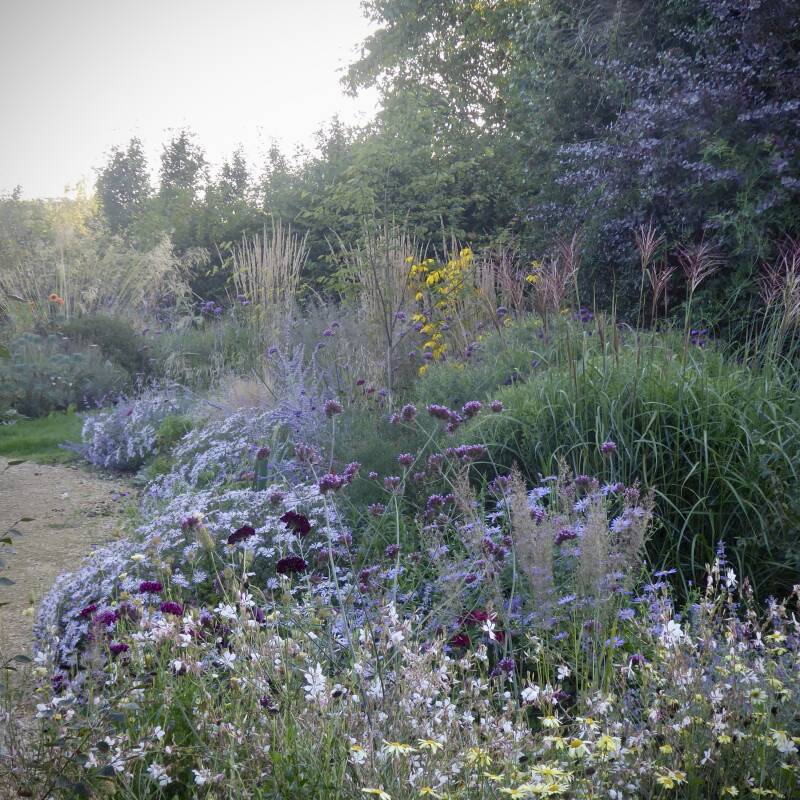If you’ve ever tried to grow soft fruits out in the open then you’ll know that birds of all shapes and sizes love delicious ripe berries just as much as we do. And they can strip plants bare with mechanical precision—normally on the very morning that you’ve decided to harvest your crop. So a fruit cage is a must if you want to grow soft fruits on any kind of scale. Read on:

What is a fruit cage?
A fruit cage is a rigid structure that’s shrouded in bird proof netting. But they can be about more than just protecting your fruit. The real beauty of fruit cages, says garden designer Frederic Whyte, is that they can be a fantastic piece of garden architecture too—even when they’re not in use in the winter. Designer Whyte has just installed square steel fruit cages into a walled garden project in Suffolk, England; he asked local firm Harrod Horticultural to powder coat them in a dark gray to soften the effect.

What are the best materials for a fruit cage?
Off-the-shelf cages tend to be made from aluminum, powder coated steel or, for a more rustic look, timber—all of which are usually sold in kits that are easy to assemble yourself at home if you have basic DIY skills. In the UK, Harrod Horticultural, which sells all of the above (a 2-meter square steel cage is £299, a 3.6-meter square timber one is £399), will also make different shapes and finishes to order if you have a particular size or design in mind.

Can I make a DIY fruit cage?
Ready made kits are ideal if you don’t have much time but the basic structure of a fruit cage is also very easy to make using any wooden poles—and will cost a fraction of the price. For stability, poles will need to be sunk 18 inches into the ground so an 8-foot pole would give you a 6-foot-, 6-inch-high fruit cage. The most complex part—and this isn’t really that tricky—is building a basic ledge and brace door. And ensuring that your nets cover every square inch of the structure. If there’s a gap, some clever creature is going to find it.

What is the best kind of netting for a fruit cage?
You can use a variety of netting depending on the wildlife around your garden and what you want to keep out—there is specific netting for birds, rabbits, deer and even butterflies. To conserve the roof netting (which can be damaged by snowfall over winter), remove at the end of each growing season.

What size fruit cage should I choose?
Fruit cages come in all shapes and sizes from low cages for strawberries and smaller bushes to vast walk-in cages that will protect fruits grown on a big scale so you need to consider not only the amount of space you have to dedicate to growing but also how much you actually want to grow. A walk-in fruit cage is arguably easier to work in too.

How long will a fruit cage last?
Metal frames should last for decades, even if your netting needs to replaced over time but timber frames will, of course, rot eventually—but it’s easy to replace any damaged or weathered parts.

What else do I need to know about fruit cages?
Prepare the ground before you install the structure; you will have more room to maneuver if you want to rototill or dig over the ground. Ideally to prepare for your plants, incorporate lots of manure and then cover the whole area with a ground cover sheet – you can then plant directly into it. Taller bushes like raspberries will also need supporting wires so plan these before you do ground preparation.
If you’re planning to grow fruits or berries, see our Garden Design 101 guides, including Edibles 101: A Field Guide to Planting, Care & Design. For more ideas to protect edibles from pests, see:
- Steal This Look: A Deer-Proof Garden in Hollywood Hills.
- Apple Trees 101: A Field Guide to Planting, Care & Design.
- The Garden Designer Is In: A Deer-Proof Edible Garden.
- Drought Tolerant, Deer-Resistant—and on a Budget—in Berkeley.















Have a Question or Comment About This Post?
Join the conversation